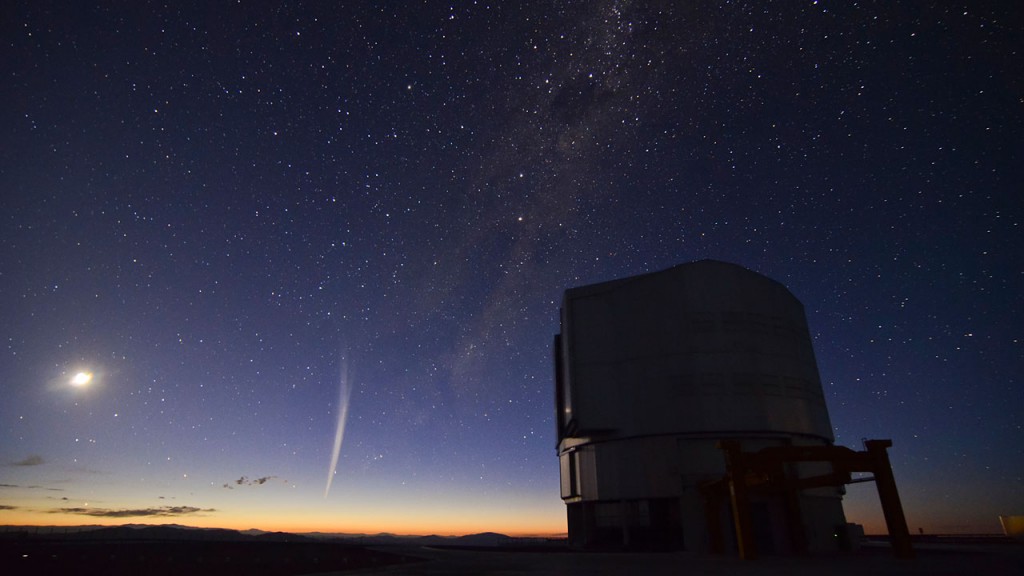Lovejoy comet appears on Southern hemisphere skies after close encounter with the Sun

 Observers at the Paranal Observatory in Chile have recently captured images of the Comet Lovejoy after it survived a close encounter with the Sun, the European Southern Observatory (ESO) has announced. Images and videos of the comet were taken before Christmas from ESO’s Paranal Observatory in Chile.
Observers at the Paranal Observatory in Chile have recently captured images of the Comet Lovejoy after it survived a close encounter with the Sun, the European Southern Observatory (ESO) has announced. Images and videos of the comet were taken before Christmas from ESO’s Paranal Observatory in Chile.
Support astronomer Gabriel Brammer saw the comet as he was preparing to end his shift at the Observatory. “On the last morning of my shift I tried to try catch it on camera before sunrise. The tail of the comet was easily visible with the naked eye, and the combination of the crescent Moon, comet, Milky Way and the laser guide star was nearly as impressive to the naked eye as it appears in the long-exposure photos,” said Brammer.
ESO optician Guillaume Blanchard made a wide-angle photo of Comet Lovejoy while ESO Photo Ambassador Yuri Beletsky added to the group of images from Santiago de Chile.
Comet Lovejoy was discovered on 27 November by Australian amateur astronomer Terry Lovejoy. The comet entered the Sun's corona, passing at 140,000 kilometres from the Sun’s surface. Specialists expected it to vaporize, but the comet survived and became visible in the Southern hemispehere, with a kilometers long tail.
Astronomers predict the comet should re-appear on the Earth's skies in 314 years.
More images from the skies taken by ESO photographers here.
editor@romania-insider.com
(Photo sources: ESO/Gabriel Brammer; ESO/Yuri Beletsky)













